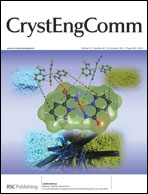Facile synthesis of novel Nb3O7F nanoflowers, their optical and photocatalytic properties
Abstract
Novel nanoflowers (NNF) of Nb3O7F have been synthesized by a facile template free route without using any surfactant. The evolution of these NNF have been studied by varying different reaction parameters. Using the UV-Vis spectra absorption peak the calculated bandgap was 2.9 eV. Organic dye rhodamine B (RhB) was degraded with average photodegradation efficiency of 87.8%, 94.23% and 99.7% with higher rate constant k = 1.1559, 1.9011 and 3.8862 for 0.005 g, 0.01 g and 0.1 g respectively. The rate constant for 0.1 g was found to be larger than for Nb2O5, commercial TiO2 Degussa P25, carbon modified Nb2O5/TiO2, g-C3N4, Fe2O3/g-C3N4 composites and SnNb2O6.


 Please wait while we load your content...
Please wait while we load your content...